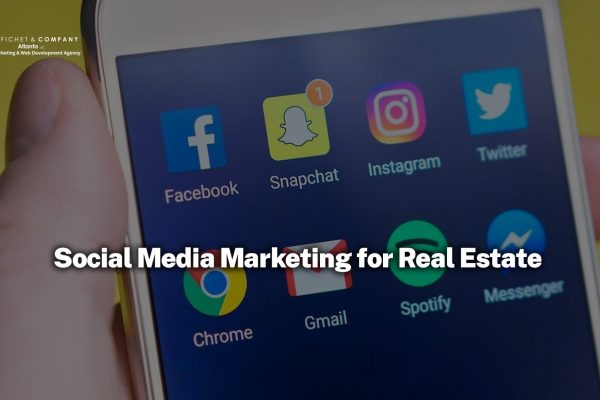How to write SEO-friendly Blog Post | Part I
How To Write SEO-Friendly Blog Post | Part I
Table of Contents
If you’re running a business, chances are you want to attract more customers and generate more sales. One of the best ways to do this is by writing an SEO blog.
An SEO blog is a blog that’s optimized for search engines, which means it’s designed to rank highly in search results. This can be achieved by including keywords and phrases that people are likely to search for, as well as other optimization techniques.
If you’re not sure where to start, don’t worry – we’ve got you covered. In this article, we’ll give you some tips on how to write an SEO blog that will help your business attract more customers and generate more sales. Let’s get started!

Average Length Of An SEO Blog Post
It’s no secret that SEO blogs can be extremely effective in driving traffic to your website. But how long should an SEO blog be? How many words should you aim for?
Here’s a look at some recent data from leading SEO blogs to get a sense of what’s working well.
The average length of an SEO blog post is around 1,500 words. However, posts that are closer to 2,000 words tend to perform better in terms of organic traffic and social shares.
So, if you’re aiming for an SEO blog that will really pack a punch, try to keep your posts around the 2,000-word mark. Of course, quality is more important than quantity, so don’t sacrifice substance for the sake of length. But if you can write quality, informative blog posts that are around 2,000 words, you’ll likely see some great results.
Choose The Right Keywords
One of the most important aspects of writing an SEO blog is choosing the right keywords. Keywords are the words and phrases that people use when they search for something on a search engine.
If you want your blog to rank highly in search results, you need to choose keywords that are relevant to your business and that people are actually searching for. You can use keyword research tools like Google AdWords Keyword Planner and Moz Keyword Explorer to find high-traffic keywords that are relevant to your business.
The first step is to understand what your customer is looking for. What are their needs and desires? What words or phrases would they use when searching for something like what you offer?
Once you have a good understanding of your customer, it’s time to start brainstorming keyword ideas. There are a number of tools that can help with this, including Google’s Keyword Planner and Moz’s Keyword Explorer.
Once you have a list of potential keywords, it’s important to do some research to see how competitive each keyword is. Try searching for each keyword in Google and see how many results come up. The more results, the more competitive the keyword is.
You can also use tools like Moz’s Keyword Difficulty Tool to get a more accurate picture of how difficult it would be to rank for a particular keyword.
Once you’ve chosen your keywords, it’s important to use them throughout your website or blog in order to optimize your site for search engines. This includes using them in your page titles, headings, and in the body of your content.

Use Keyword-Rich Titles
Once you’ve chosen the right keywords, it’s important to use them in your blog post titles. Your title should be attention-grabbing and should include the keywords that you’re targeting.
For example, if you’re a plumber who’s written a blog post about unclogging drains, your title could be “How to Unclog a Drain – The Ultimate Guide.”
Your title is one of the first things that potential readers will see when they find your blog post. That’s why it’s important to make sure that your titles are not only descriptive but also keyword-rich.
When you use relevant keywords in your title, you’re more likely to show up on search engine results pages (SERPs), which means that more people will be able to find and read your content. And since titles are often what people remember most about a piece of content, using keywords can also help improve your post’s overall click-through rate (CTR).
There are a few different ways to go about finding the right keywords for your title. First, try thinking about the terms or phrases that someone might use when searching for your content. For instance, if you’re writing a blog post about healthy eating, some relevant keywords could be “healthy recipes,” “healthy cooking,” or “healthy eating tips.”
You can also use keyword research tools like Google AdWords Keyword Planner or Moz’s Keyword Explorer to see what terms are being searched for most often. Once you have a list of potential keywords, try to work them into your title in a way that makes sense and is easy to read.
Keep in mind that while it’s important to use keyword-rich titles, you shouldn’t stuff your titles full of keywords just for the sake of getting more views. This will not only turn off potential readers but can also get you penalized by Google. So focus on creating titles that are both keyword-rich and interesting, and your blog posts should get the attention they deserve.

Optimize Your Meta Tags
Meta tags are the HTML tags that provide information about your blog post to search engines. There are two important meta tags that you need to optimize for SEO: the title tag and the meta description.
Your title tag should be 55 characters or less, and it should include your target keyword. Your meta description should be 155 characters or less, and it should give a brief overview of your blog post.
One of the most important aspects of on-page SEO is optimizing your meta tags. Meta tags are the brief snippets of text that appear in the search engine results pages (SERPs) when someone searches for a keyword or phrase related to your website.
Your meta tags should accurately reflect the content of your website, and they should be written in such a way that they will attract clicks from potential customers. In order to optimize your meta tags, you will need to use the right keywords and phrases, and you will also need to make sure that your tags are well-written and compelling.
If you’re not sure how to optimize your meta tags, don’t worry – we can help. We offer a variety of SEO services that can help you to improve your website’s ranking in the SERPs. Contact us today to learn more about how we can help you to improve your meta tags and boost your SEO.
What are Meta Tags?
Meta tags are HTML tags that provide information about a web page. They are used by search engines to index and classify a web page, and they also appear on the search results pages (SERPs).
There are a variety of different types of meta tags, but the two most important types for SEO purposes are the title tag and the meta description tag. The title tag is the tag that appears in the SERP as the clickable link to your website, and the meta description is the brief snippet of text that appears beneath the title tag.
Both the title tag and the meta description are important for SEO because they give search engines information about your website, and they also serve to attract clicks from potential customers. This means that it’s important to use the right keywords and phrases in your tags and to make sure that your tags are well-written and compelling.
How to Optimize Your Meta Tags
There are a few simple steps you can take to optimize your meta tags:
- Use the right keywords and phrases – The first step is to choose the right keywords and phrases for your tags. You’ll want to use keywords that accurately reflect the content of your website, and you’ll also want to choose keywords that are popular among potential customers. You can use a variety of tools to research keywords, including Google AdWords Keyword Planner and Google Trends.
- Make sure your tags are well-written – Once you’ve chosen the right keywords, you’ll need to make sure that your tags are well-written. Your tags should be concise and to the point, and they should accurately reflect the content of your website. Avoid keyword stuffing, and make sure that your tags are compelling enough to attract clicks.
- Use unique tags for each page – It’s important to use unique title tags and meta descriptions for each page on your website. This helps to ensure that each page is properly indexed by search engines, and it also helps to prevent your website from being penalized for duplicate content.
- Keep your tags updated – As your website evolves, so should your tags. Make sure to keep your tags up-to-date and revise them as needed to ensure that they accurately reflect the current state of your website.

Use Keyword-Rich Headers
In addition to using keywords in your title and meta tags, you should also use them in your blog post headers. Your headers help to break up your content and make it easier to read, and they’re also a great way to include additional keywords.
For example, if you’re writing a blog post about the benefits of exercise, your headers could be “The Benefits of Exercise,” “Why You Should Exercise,” or “How Exercise Can Benefit Your Health.”
As a general rule, you should try to use keywords as often as possible in your headers. This helps search engines understand what your page is about and can result in higher rankings.
There are a few things to keep in mind when using keywords in headers:
– Make sure the keywords are relevant to the content of the page.
– Don’t stuff keywords into the header – this can actually hurt your ranking.
– Use different variations of the keyword to avoid repeating yourself.
If you’re not sure which keywords to use, try doing some research with a tool like Google AdWords Keyword Planner. This will help you find phrases that people are actually searching for.
Once you have your keywords, make sure to use them in the following places:
– Title tag: This is the most important place to use keywords, as it tells search engines what the page is about.
– Meta description: This is a short description of the page that appears in search results. Including keywords here can help increase your click-through rate.
– H1 tag: The H1 tag is the main header on a page. Using keywords here can help improve your ranking.
– Alt tags: These are tags that describe images. If you’re using images on your page, be sure to include keywords in the alt tags so that search engines can index them.
Using keyword-rich headers is an important part of SEO and can help improve your ranking in search results. Follow the tips above to make the most of this strategy.

Conclusion Part I Of The Blog Series
When it comes to SEO, there are a lot of different factors that come into play. In part one of this blog series, we covered some of the basics of SEO and what it takes to get started. In this second instalment, we’re going to take a closer look at some of the more advanced aspects of SEO and how you can use them to your advantage.
One of the most important things to remember about SEO is that it’s always changing. What worked yesterday might not work today, and what works today might not work tomorrow. That’s why it’s so important to stay up-to-date on the latest news and trends in the world of SEO. There are a lot of great resources out there that can help you stay on top of the latest changes, so make sure to take advantage of them.
Another thing to keep in mind is that SEO is not a one-time thing. You need to continuously work at it if you want to see results. It’s not enough to just do the bare minimum; you need to go above and beyond if you want to really see your efforts pay off.
Finally, don’t forget that SEO is a lot of work. It takes time, effort, and dedication to see results. If you’re not willing to put in the work, then it’s probably not worth your time or energy. However, if you are willing to put in the effort, then you can definitely reap the rewards of a successful SEO campaign.
SEO is a complex and ever-changing field, but if you keep these things in mind, you’ll be well on your way to success. Thanks for reading, and we hope you found this second instalment of our blog series helpful. Be sure to check back soon for the second blog.
About Montfichet & Company – Atlanta
Montfichet & Company – Atlanta is a full-service marketing agency that consists of exceptional thinkers, strategists, digital innovators, developers, and problem solvers. We provide online marketing solutions for businesses and entrepreneurs.
Our team of experts can handle all your online marketing activities, including SEO, social media, pay-per-click ads (PPC) for both organic search and paid search, website design, content development, and data reports (raw data or simple reporting), lead generation strategies, and more. Montfichet Atlanta can help businesses increase the number of leads to convert those leads into customers.
If you found this article beneficial, feel free to leave a comment below. We are located at 3343 Peachtree Road Ste. 180-581 in Atlanta, Georgia. You can also email our team of experts directly at Atlanta@montfichet.com or contact us at 404-900-9814 for more information.











Nice Blog! The content you have shared is very elaborative and informative. Thanks a lot for sharing such a great piece of knowledge.
Thank you for sharing such an insightful article. Hope to read more content just like this in the future.